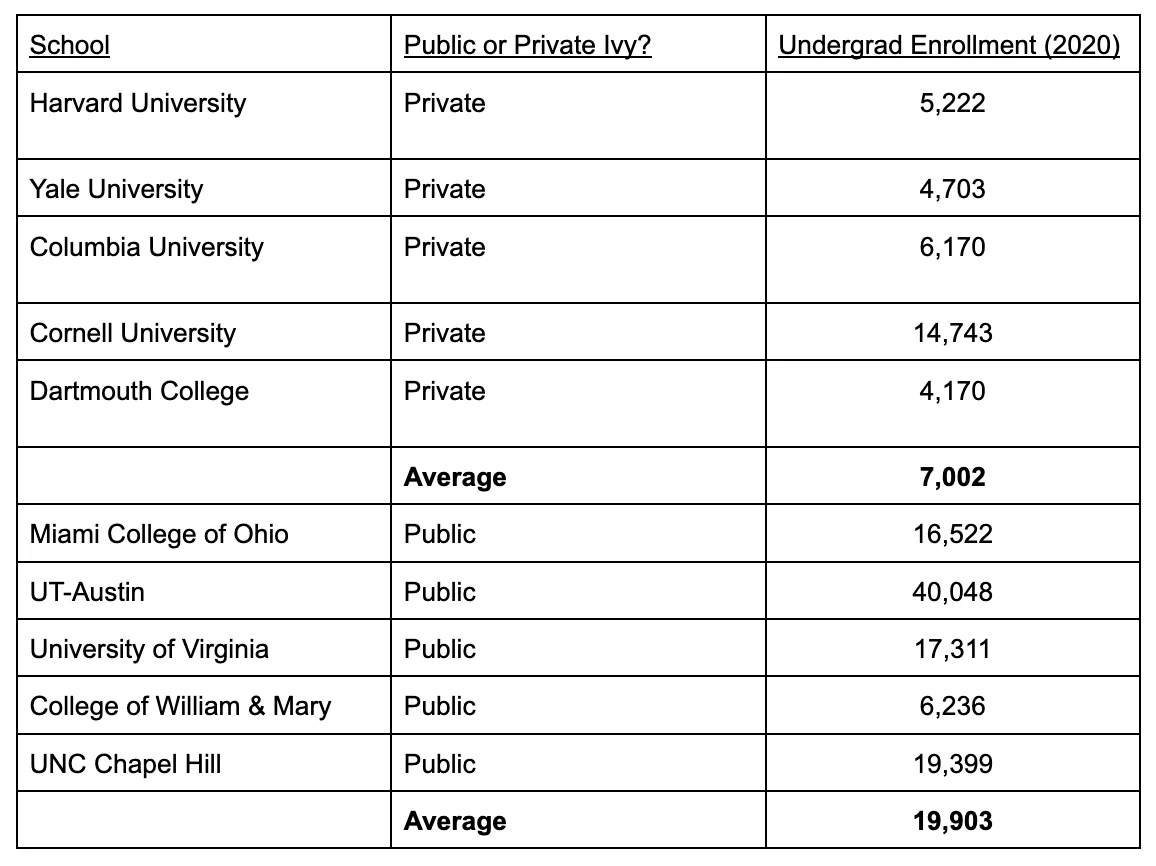Let’s set the scene - you’re a high school student with college just around the corner. You’ve started to dig into the research phase of your journey, which naturally leads you to come across the fact that there are many different types of schools out there for you to explore. Some are big, some are small. Some focus on specific areas of study, while others offer every degree option under the sun.
In a prior blog post, I covered a group of schools known as the Big 10, and you’ve probably heard of another group of schools known as the Ivy League. In this blog post, I’m going to tell you everything you need to know about another sub-sect of institutions, known as the public ivy league schools of the US.
Public ivy league schools, aka “public ivies” are a group of US colleges and universities that are known for being particularly prestigious, academically rigorous, and selective.
The term “public ivy league schools” was coined in 1985 by Richard Moll, a former undergraduate admissions officer at Yale and rose in popularity after the release of his book The Public Ivys: A Guide to America's Best Public Undergraduate Colleges and Universities. At the time the book was published, Mott highlighted 15 public universities that he believed met the following criteria:
The initial 15 schools that made Mott’s list of public ivy league schools were:
Despite the “legit” list of public ivies comprising 15 institutions, Mott also went so far as to create a second list of schools that he believed were almost worthy of making the legit list but didn’t quite meet all of the qualifications. Here are the 9 schools on Mott’s secondary list of public ivy league schools:
Attending a public ivy probably seems enticing right off the bat (I mean, who isn’t enthralled by the idea of attending a school that’s been recognized for its excellence?). However, there are lots of other reasons why you may want to consider learning more about, applying to, and maybe even attending one of America’s public ivy league schools.
First off, the schools on both lists have reputations of academic excellence across the board, with the majority of them also offering honors programs for the highest achieving students. Second, in addition to being known for their academic excellence, many of these schools are known for their athletic excellence as well.
Additionally, if you’re looking for a well-known school that also falls into the realm of being somewhat cost-effective (particularly if you’re looking at in-state options), the public ivies also tend to check both of these boxes in comparison to schools of similar prestige, making them a dependable and attractive choice for prospective college students.
Both sets of schools have the word “ivy” in the name, however, there are several key differences between them that you should be aware of as you continue to embark on your college research and application journey.
As I briefly mentioned above, public ivy league schools are commonly referred to as a more cost-efficient option in comparison to their private ivy league counterparts, especially when it comes to in-state tuition. To look at this a little deeper, in the chart below, I compiled the 2022-23 in-state and out-of-state tuition costs for 5 ivy schools in each bucket, public and private.

The first thing you may notice is that the majority of the private ivy league schools highlighted only have one tuition rate for both in-state and out-of-state students.
When comparing the tuition rates for private ivy league schools and public ivy league schools, you’ll surely notice that the difference is a significant one: the average “in-state” tuition at a private ivy comes in at just over $80,000, meanwhile the average in-state tuition at a public ivy is around $33,500.
The difference in cost is smaller, yet still quite significant, when comparing out-of-state rates. The only caveat that I think is worth mentioning when discussing and comparing costs is that most private ivy league schools have special offers for students whose annual family income falls below a certain number. For some schools, that number is $65,000, for others it’s slightly higher.
So, while the overall difference in cost between private and public ivy league schools appears to be a large one, keep in mind that private ivies are known for special financial aid offerings for students who meet certain criteria.
Next up is size! Going back to our chart with 5 example schools in each category…

You’ll notice that the average size of a private ivy is much, much smaller than the average size of a public ivy. (Source: US News)
Finally, when it comes to selectivity, the private ivy league schools of the US take the cake as being some of the notoriously most selective schools in the country, with an average acceptance rate of around 9%.
While the public ivies can also be selective in their admissions (they are the public ivies after all!), you’ll notice in your research that admissions rates vary widely among public ivy league schools.
As I stated in my blog post on Big 10 Schools, it’s difficult to answer this question because there are so many public ivy league schools, and each one is different in its programs, student culture, and overall offerings!
However, to help you in your college research/application/admissions journey, here are a few questions I suggest you ask yourself. Once you’ve answered them, you will have a nice, structured “guide” to refer to as you continue to research colleges, including those public ivy league schools!